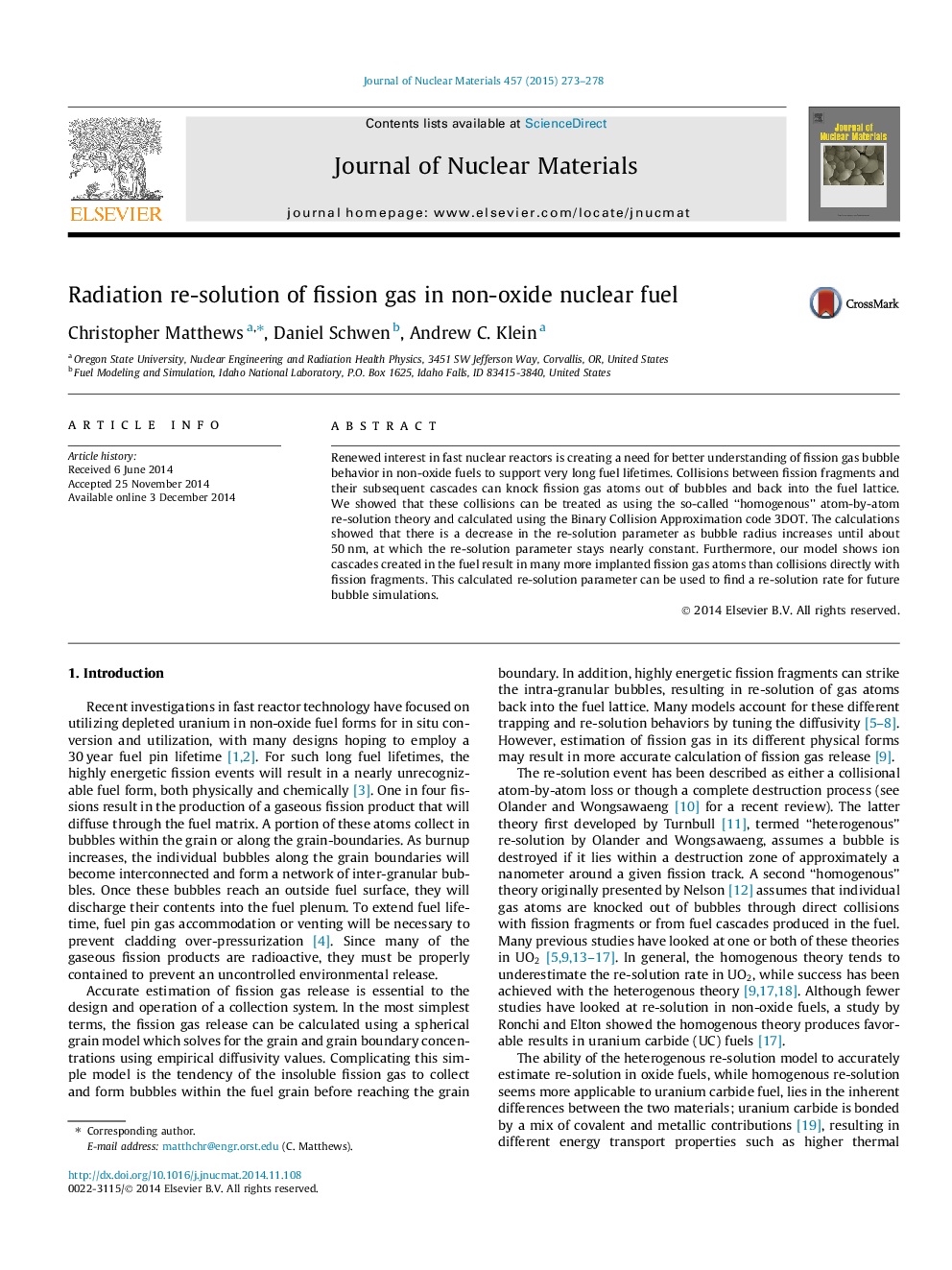| Article ID | Journal | Published Year | Pages | File Type |
|---|---|---|---|---|
| 1565055 | Journal of Nuclear Materials | 2015 | 6 Pages |
Renewed interest in fast nuclear reactors is creating a need for better understanding of fission gas bubble behavior in non-oxide fuels to support very long fuel lifetimes. Collisions between fission fragments and their subsequent cascades can knock fission gas atoms out of bubbles and back into the fuel lattice. We showed that these collisions can be treated as using the so-called “homogenous” atom-by-atom re-solution theory and calculated using the Binary Collision Approximation code 3DOT. The calculations showed that there is a decrease in the re-solution parameter as bubble radius increases until about 50 nm, at which the re-solution parameter stays nearly constant. Furthermore, our model shows ion cascades created in the fuel result in many more implanted fission gas atoms than collisions directly with fission fragments. This calculated re-solution parameter can be used to find a re-solution rate for future bubble simulations.
